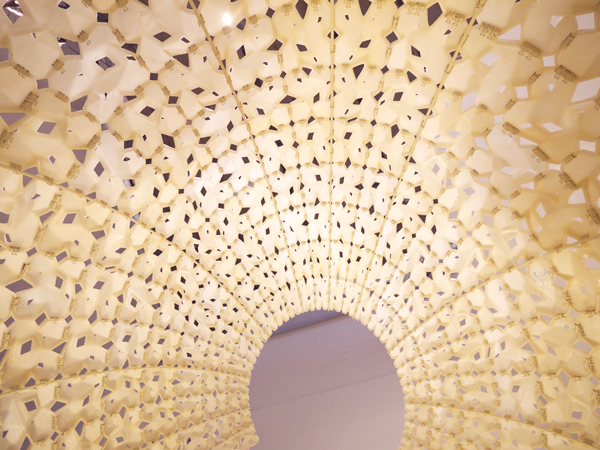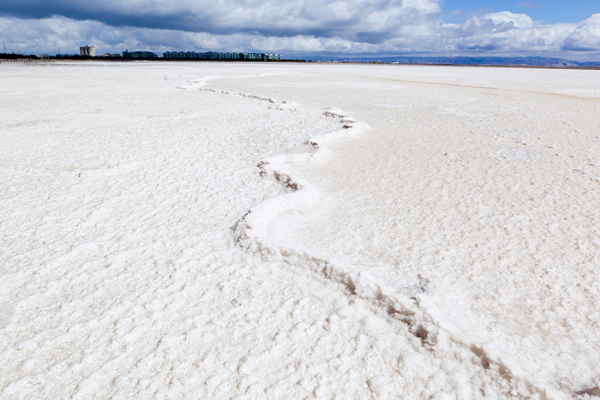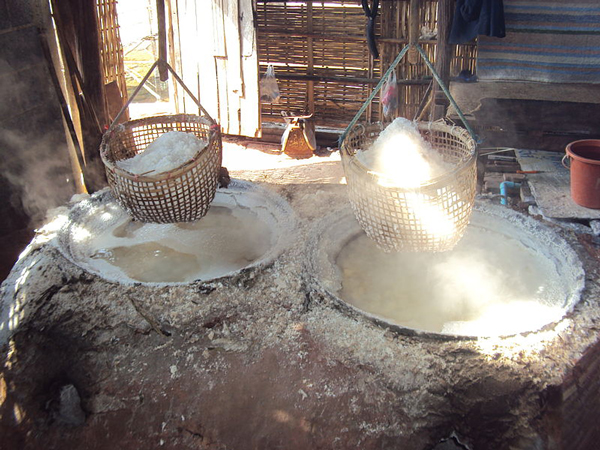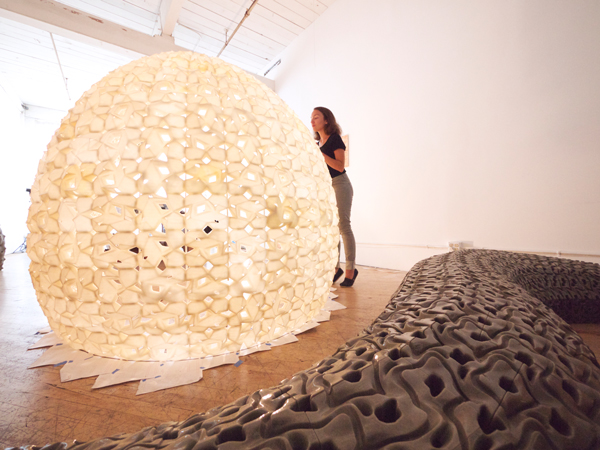
The Saltygloo is an experiment in 3-D printing using locally harvested salt from the San Francisco Bay to produce a large-scale, lightweight, additive manufactured structures. The Saltygloo takes its clues from the Inuit Igloo, both in form and concept. In the landscape of the San Francisco Bay Area natural power from the sun and wind, produce 500000 tonnes of sea salt each year.
The salt is harvested from 109-year-old salt crystallization ponds in Redwood City. These ponds are the final stop in a five-year salt-making process that involves moving bay water through a series of evaporation ponds. In these ponds the highly saline water completes evaporation, leaving 8-12 inches of solid crystallized salt that is then harvested for industrial use. From this landscape, a new kind of architecture is theorized and created through the lens of 3D printing and computer-aided design. The Saltygloo is made of a combination of salt harvested from the San Francisco Bay and glue, a “salty glue”, which makes an ideal 3D printing material, one that is strong, waterproof, lightweight, translucent and inexpensive.

To build the Saltygloo, 336 translucent panels were 3D printed using this unique material invention. Each panel recalls the crystalline form of salt and is randomly rotated and aggregated to create a larger structure where all tiles in the structure are unique.
The form of the Saltygloo is drawn from the forms found in the Inuit Igloos, but also the shapes and forms of tools and equipment found in the ancient process of boiling brine.
The panels are connected together to form a rigid shell that is further supported with lightweight aluminum rods flexed in tension, making the structure extremely lightweight and able to be easily transported assembled in only a few hours.
The translucent qualities of the material, a product of the fabrication process and the natural properties of salt, allow for natural light to permeate the space and highlight the assembly and structure and reveal the unique qualities of one of humankind’s most essential minerals.
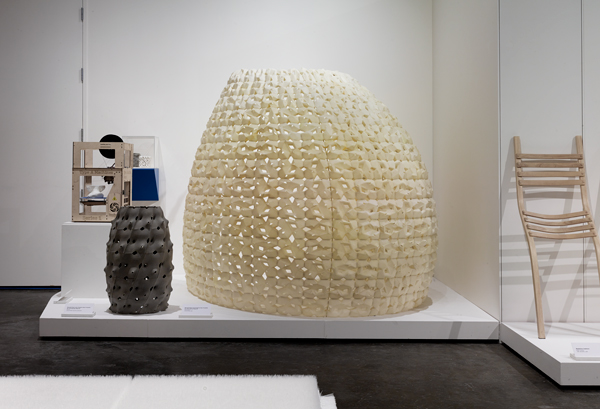
Project Date: 2013
Design Team: Ronald Rael, Virginia San Fratello, Seong Koo Lee.
Fabrication Team: Ronald Rael, Seong Koo Lee, Eleftheria Stavridi
Material Development: Ronald Rael, Mark Kelly, Kent Wilson
Special Thanks: Professor Mark Ganter, Solheim Lab, University of Washington, Ehren Tool, Department of Art Practice, University of California Berkeley, Department of Architecture, University of California Berkeley, Department of Design, San Jose State University, Kwang Min Ryu and Chaewoo Rhee.
Additional Information: The Saltygloo will be on display at the Museum of Craft and Design for the show New West Coast Design 2 from opening October 26, 2013 through January 5, 2014.
